Welcome to Hank’s November 2024 Astrophotography Blog. Last month I posted a couple of the images that I submitted for a group BHAS photo project of the Ghost Nebula. Here is the final product, processed by BHAS member Mike. I asked Mike for details about the image and here is what he sent:
There were 8 imagers. They submitted 1,713 separate frames, totaling just over 116 hours of image time. Each imager did the pre-processing (calibration with Flat, Dark, and Bias frames) before submitting the images for further processing. The pre-processed images were integrated and processed to the end result with Pixinsight. I used very little in terms of image rejection algorithms so the maximum number of frames would be included. I did use a filter in the integration process to remove satellite trails and other unwelcome distractions.
Congratulation to the BHAS members who participated in this project and to Mike for his work to bring it all together! What an amazing photo!
It seems like each season brings its challenges and opportunities. This last month I’ve been struggling with my Mallincam DS10c camera. It seems that it would stop working at unpredictable times, making it difficult to capture long exposures for a long period. BHAS member Chris suggested that it might be that the computer USB connection to the camera, mount and focuser might be drawing too much power, causing the camera to shut down. So, after getting a new USB 3.0 powered hub to handle the requirements of all the devices, it seems to be working! Hopefully it will continue to do so. Here are some of the images I’ve taken this month. The first three were taken under sketchy skies—too much upper atmosphere disturbance! The final one of M42 was taken on a clear night, and you can see the difference.
One of my opportunities this month was my grandson, Sage, who spent the month in Chile! Chile is where many of the most powerful telescopes in the world are located! So I asked Sage to take a couple of photos of the night sky for me on his phone. I’ve never seen, with my own eyes, the skies of the southern hemisphere, so I was curious what their constellations might look like. He sent me a series of images that I “glued” together to get an idea of what the panorama of the sky might look like, and using a sky atlas, I was able to identify a couple of objects. The LMC and SMC are the Large and Small Magellanic Clouds. They are dwarf galaxies in our Local Group of galaxies and are among the few objects that we can see visually that are outside our own Milky Way Galaxy. I also was able to identify the Southern Cross, four bright stars that make up the cross of the Crux constellation. The bright stars of the Crux were known to the Ancient Greeks and were visible as far north as Britain in the 4th millennium BC. However, the procession of equinoxes gradually lowered the stars below the European horizon, and by 400 AD the stars of the Crux were no longer visible in most of Europe. Can you spot the Southern Cross in the composite photo?
Until next time, Clear Skies! -Hank





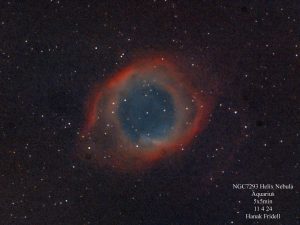
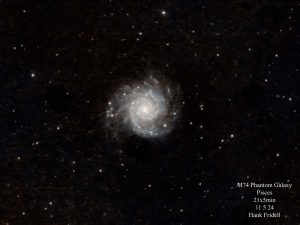
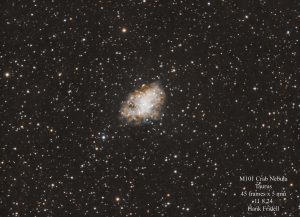
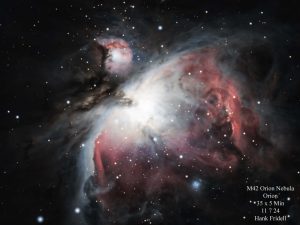
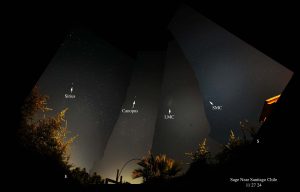
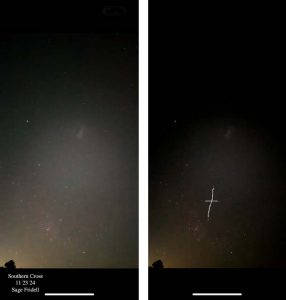
ghost nebula is well named.
Mike–Yea, pretty spooky! Makes me wonder what these nebulae are really up to!
Thank you for sharing this! Very cool
Thanks Peggy! Merry Christmas to you and your family! -Hank